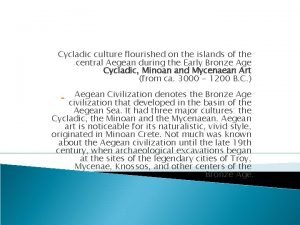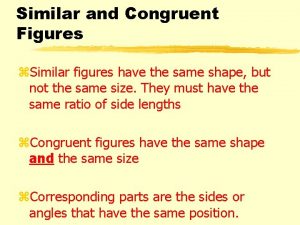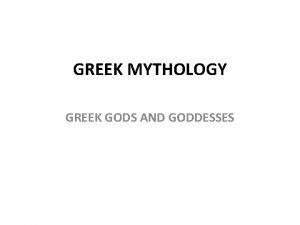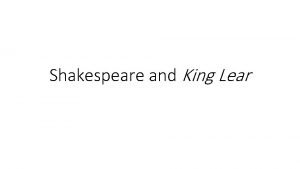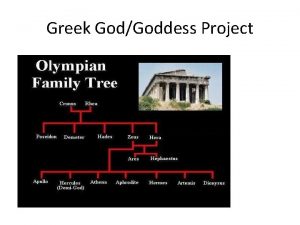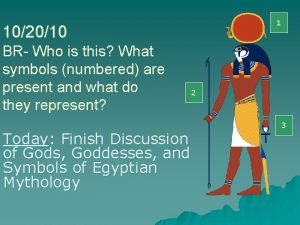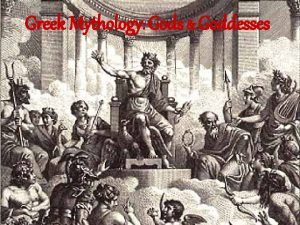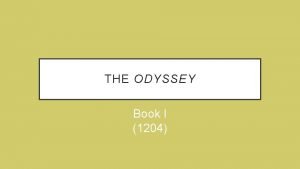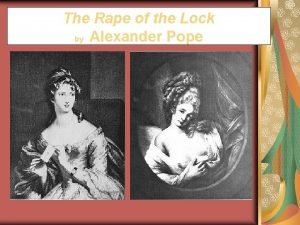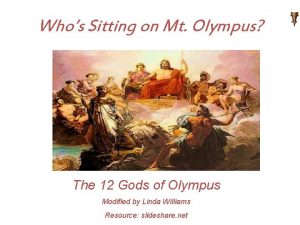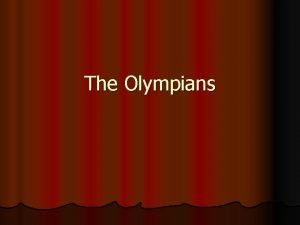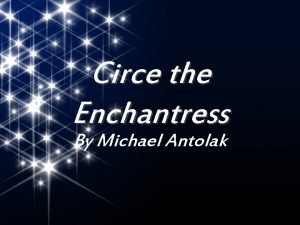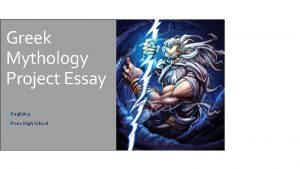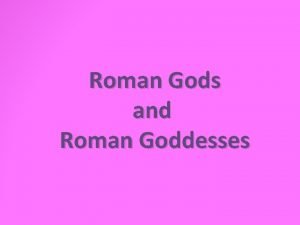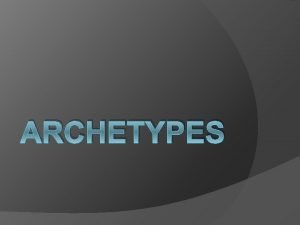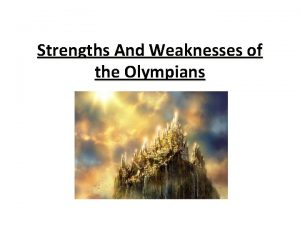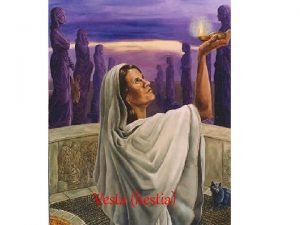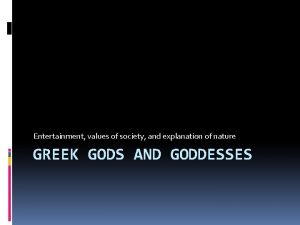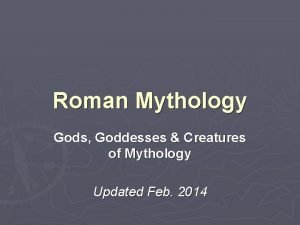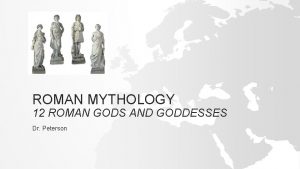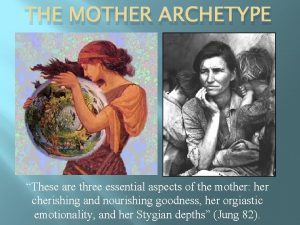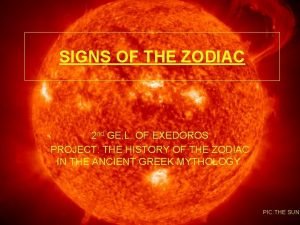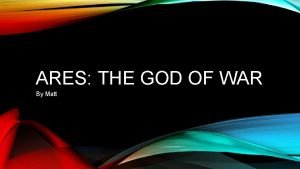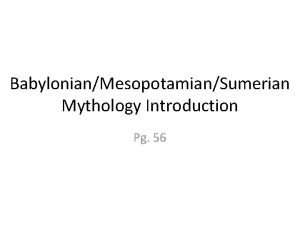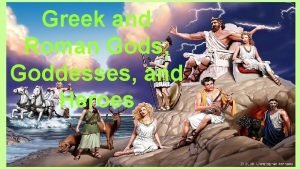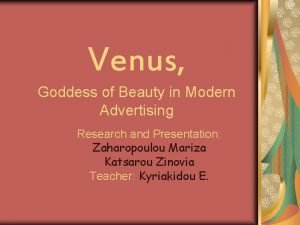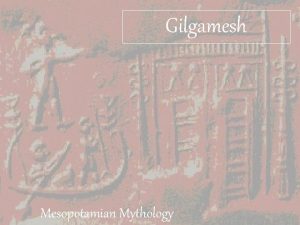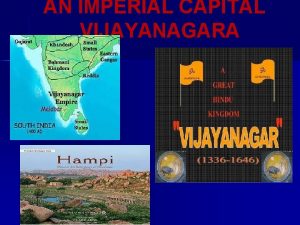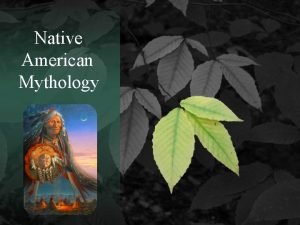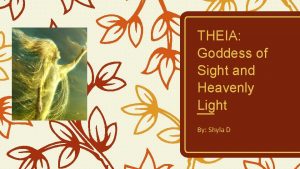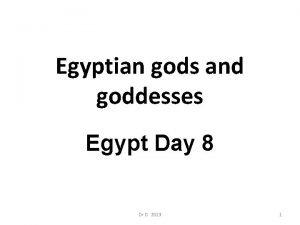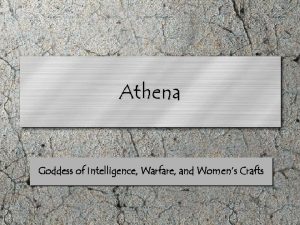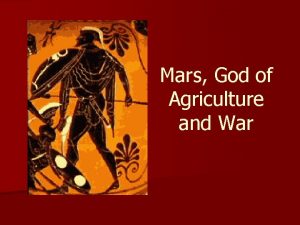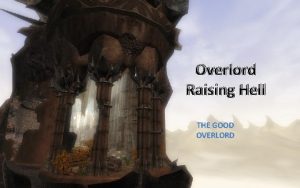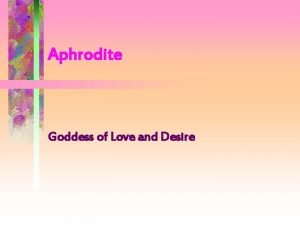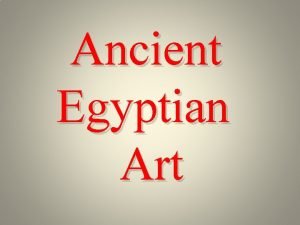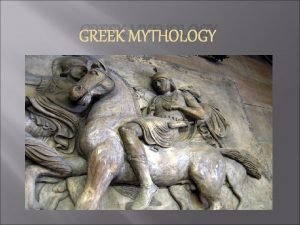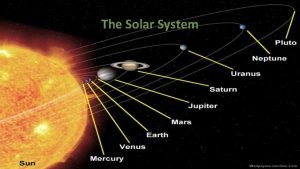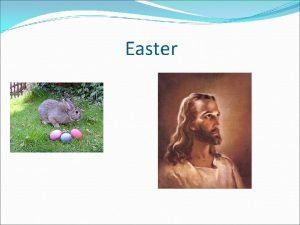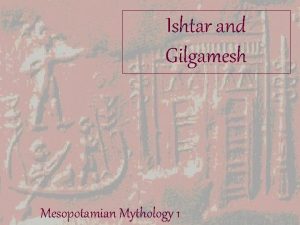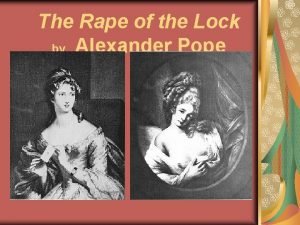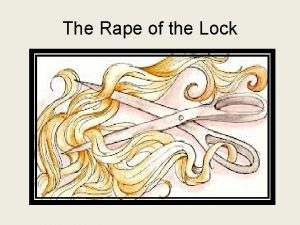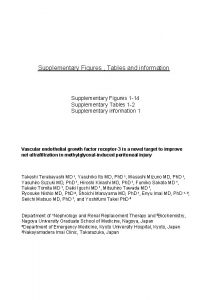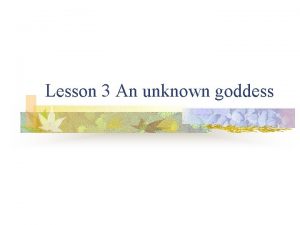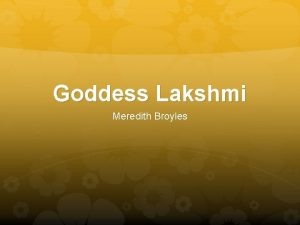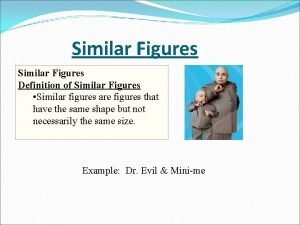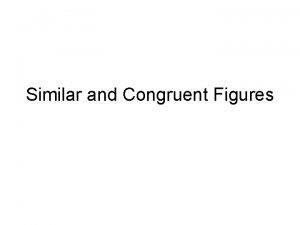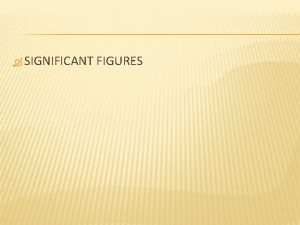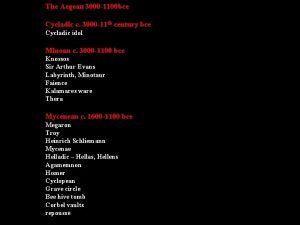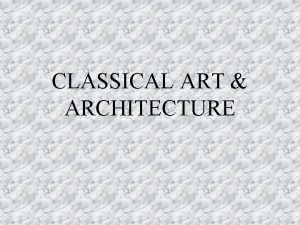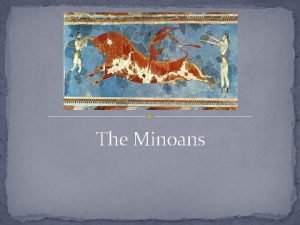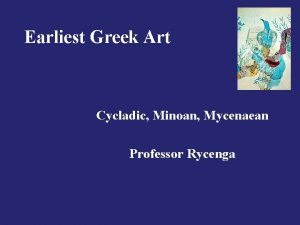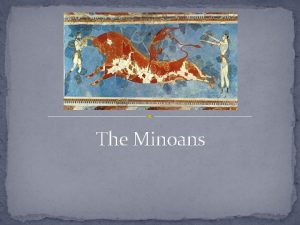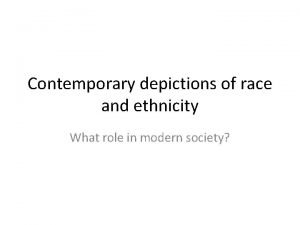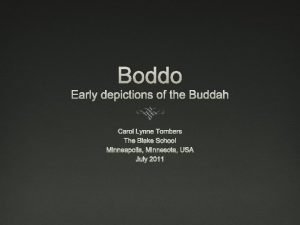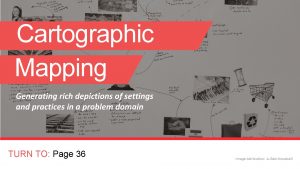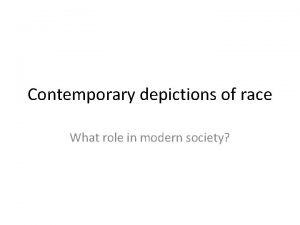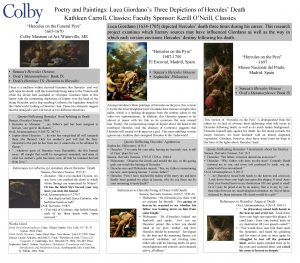Cycladic Goddess Figures What do depictions of people







































![[Gericault] interviewed the few survivors, made drawings of the mutilated corpses in the Paris [Gericault] interviewed the few survivors, made drawings of the mutilated corpses in the Paris](https://slidetodoc.com/presentation_image_h2/2787391f053443b68ec15f1a2f4c03e7/image-40.jpg)





















- Slides: 61

Cycladic Goddess Figures What do depictions of people convey about human virtues and failings? the relationship between humans and the divine? the relationship between humans and nature? gender? How do these ideas vary from age to age and culture to culture

What do depictions of people convey about human virtues and failings? the relationship between humans and the divine? the relationship between humans and nature? gender? How do these ideas vary from age to age and culture to culture Classical Hellenistic

Archaic Greek sculpture: Kouros, Kore’ 659 -490 B. C. E. Classical Greek Sculpture: Contrapposto 490 -323 B. C. E Hellenistic Sculpture 323 -145 B. C. E. asymmetry— asymmetrical balance Symmetry Geometric stylization order, calm, proportion, naturalism + idealization, potential energy, emotional restraint, humanism: classicism, classical asymmetry imbalance tension, movement, drama, emotion,

Neoclassical (1700 -1780) Artists sought to create idealized, balanced and harmonious forms based on observation of nature and the logical mathematical arrangement of visual elements evoking calm, uplifting emotions, and suggesting universal, timeless truth Nicolas Poussin (1594 -1665) The Holy Family on the Steps, 1648 Romantic (1780 -1860) Artists prized feeling over reason, and sought to create works that evoked intense passion. Romantics favored freedom and individual expression over formal precision and the classical idea of timeless truth. Eugène Delacroix ( 1798 -1863) The Death of Sardanapalus, 1826

Renaissance------Baroque------Neoclassical-------Romantic-------Modern-------Post Modern 1400 -1600 -1700 -1780 -1850 -1970—present (? ) (Poussin, NC) classical Classical Renaissance Neoclassical romantic Hellenistic Baroque Romantic Apollonic----------------Dionysic Athena-----------------Aphrodite Calm-------------------Tension Logic, reason-------------Emotion, Drama Simplicity----------------complexity, ornamentation Balance-----------------Imbalance Order------------------Chaos Restraint----------------Excess, extravagance, sensuality Potential Energy-----------Movement “Timeless Truth and Beauty”------Dynamism, turbulence, change Rationalism---------------Mysticism Beauty and Order in Nature----Sensuality, Mystery in Nature Empiricism, Science, Thought-----Intuition, Imagination, Dreams Discipline----------------Freedom Nature is ordered and knowable--Nature is Wild and Mysterious Authority, Tradition----------Individual Expression, Freedom Clarity ------------------Mystery Mathematically perfected Form----Arouse feeling

Neoclassicism: 1700 -1780 Return to Classicism with emphasis on Painting as well as sculpture. Age of enlightenment: belief in the supremacy of reason over pleasure. And a conviction that humans could perfect society. Popularization of science and applied reason to human affairs. “Enlightenment is the liberation of humanity from its self-imposed state of immaturity…Dare to know! Dare to use your own understanding!”—Immanuel Kant (German philosopher) 1795 “By appeal to reason and fact, humans could achieve a limitless progress in culture and society” --Condorcet (French philosopher) c. 1760 Neoclassical style: “There is but one way for moderns to become great, and perhaps unequaled; I mean by imitating the ancients” —Joachim Winckelmann (German writer) c. 1760 from Thoughts on the imitation of Greek Works Neoclassicism…like other versions of classicism sought to create a world of timeless truth and beauty…and expressed a desire for the universal moral truths and enduring standards of reason and beauty. It responded to a common impulse in Western civilization: the desire to return to a simpler and more glorious past. In painting figures, props, costumes, lighting, backgrounds, and all visual (formal) elements are purposefully arranged (composition) to convey particular feelings and/or meanings.

Golden Rectangle: Fibonacci series 1, 2, 3, 5, 8, 13…




Nicolas Poussin worked in the late Baroque period but is considered to be a pioneer of the Neoclassical style. Holy Family on the Steps 1648

Poussin Holy Family on the Steps 1648

5: 8 Rectangle Poussin Holy Family on the Steps 1648

5: 8 Rectangle Poussin Holy Family on the Steps 1648

5: 8 Rectangle Poussin Holy Family on the Steps 1648 Asymmetrical balance

Poussin Holy Family on the Steps 1648


Like Renaissance Humanism, Neoclassicism combines Greek Humanism with late medieval (Gothic) Christian theology. (Greek) Rationalism is the belief that human reason is the primary source of truth and order in the world…Greeks searched for a knowable and unchanging design in the capricious word of experience. ” ---Bishop 48 “Reason does not destroy faith but perfects it. ” c. 1270. According to Aquinas, humans came to know God’s world both through the Bible’s revealed truth and the logical workings of human understanding. God, the highest reality would always remain a mystery to human reason, hidden even in the words of Christian scripture. Still, Aquinas argued, God revealed himself in other ways, through the works of nature and the workings of human reason. He held that God and nature were one, forming a harmonious order that was intelligible to the powers of human reason. Thus the study of nature led directly ultimately to an understanding of God. Bishop, 177

“This montage was inspired by the natural patterns seen in sunflowers. The seeds in a sunflower are separated by the Golden Angle, which produces what looks like simultaneous spirals in both directions around the middle of the sunflower. In addition, the number of spirals and petals on a sunflower are always in the Fibonacci series (0, 1, 1, 2, 3, 5, 8, 13, 21, 34, 55). This pattern is a re-occurring theme in nature (seashells, pinecones, etc. . . ).

Rabbits are not the only biological example displaying the Fibonacci series; plants show a variety of features showing the sequence, for example the number of flower petals on the majority of plants comes from the series. Bees can also be shown to have Fibonacci numbers in their family history. Within a colony of bees, only the queen produces eggs. If these eggs are fertilized then female, worker bees are produced. Male bees (drones), are produced by parthenogenesis, that is, from unfertilized eggs. Female bees therefore have two parents, drones in contrast, have just one parent. The ancestry of a drone bee and a worker bee is shown below. The diagram to the right shows the ancestry tree of a drone for 7 generations and demonstrates the Fibonacci series. Each drone has one parent, each worker has two. A similar diagram can be constructed for a worker bee.


David, Oath of the Horatii, 1785

David, Oath of the Horatii, 1785

David, Oath of the Horatii, 1785

Angelica Kauffmann Cornelia Pointing to her Children as her Treasures 1785

5: 8 Rectangle Poussin Holy Family on the Steps 1648 Neoclassicism: mathematically precise arrangement of formal elements: asymmetrical balance, order, harmony

Eugène Delacroix : Romantic Artist Death of Sardanapalus

Delacroix’s Death of Sardanapalus: swirling arabesques, creating movement, tension, and drama. Compare to stable, balanced, geometric shapes found in Neoclassical paintings.

Delacroix’s Death of Sardanapalus: Composition based on diagonal wedge of light and color set against dark background, adding to emotional impact of the scene. “Delacroix mounted his own rebellion against [Neoclassical] style, which emphasized line and skillful drawing. Delacroix instead preferred riotous color, turbulent compositions, and exotic themes. ”--Bishop

Delacroix: Exotic Hunting scenes, tension, drama, brushwork. In the depths of sensuality Let us now quench our glowing passions! And at once make ready every wonder Of unpenetrated sorcery! Let us cast ourselves into the torrent of time, Into the whirl of eventfulness, Where disappointment and success, Pleasure and pain may chop and change As chop and change they will and can, It is restless action makes the man --Goethe

Historical events during the Romantic Period: 1776 American Revolution 1789 Storming of the Bastille prison 1789 Declaration of the Rights of Man and the Citizen (constitutional government) 1793 King Louis XVI and Marie Antoinette guillotined 1793 -1794 “Reign of Terror” (thousands guillotined) 1799 Napoleon Bonaparte takes power 1804 Napoleon crowns himself emperor of France 1808 Spanish resistors executed by Napoleon’s troops

Jacques Louis David 1748 -1825 Neoclassical and Romantic Artist Napoleon Crossing the Alps (1800) Napoleon as conquering hero, bringing order to the chaotic European situation.

Jacques Louis David 1748 -1825 Neoclassical and Romantic Artist Napoleon Crossing the Alps (1800) Napoleon as conquering hero, bringing order to the chaotic European situation. Note use of diagonal and vertical compositional elements:

Francisco Goya ( 1746 -1828) Executions of the Third of May, 1808, 1814 Napoleon’s troops seen as cruel, robotic, evil. Extremely unbalanced composition, value contrast also symbolic

Francisco Goya: Witches Sabbath, Saturn Devouring His Children, The Profits: Romantic emphasis on imagination and dreams, in some cases used symbolically to denounce established Institutions and aid the cause of democracy and equality.

Francisco Goya 1746 -1828

Theodore Gericault, The Raft of the Medusa 1818. Gericault’s Raft elevated ordinary men to the position of heroic combatants in the eternal struggle against the forces of nature—a popular Romantic theme…and it publicly protested an aspect of contemporary political injustice.

Implied diagonal lines create tension and draw the viewer’s eye to the whipping sail, crashing wave, and dark clouds on one side, and the man who signals the distant rescue ship on the other.

“Sharp diagonals, vivid contrasts of light and dark…and muscular nudes…heighten the dramatic impact of the piece” –Fiero p. 53
![Gericault interviewed the few survivors made drawings of the mutilated corpses in the Paris [Gericault] interviewed the few survivors, made drawings of the mutilated corpses in the Paris](https://slidetodoc.com/presentation_image_h2/2787391f053443b68ec15f1a2f4c03e7/image-40.jpg)
[Gericault] interviewed the few survivors, made drawings of the mutilated corpses in the Paris morgue, and even had a model of the raft constructed in his studio. The result was enormous both in size…and in dramatic impact. ”—Fiero p. 53

Neoclassical: Just as Classical Greek sculptors combined observation and naturalistic detail with idealized proportions, Neoclassical landscape painters sought to improve on nature. Landscape, [no longer] a simple entertainment or decorative addition [to figure paintings], became a poetic creation in its own right, and the pleasure to be gained from it, through the contemplation of nature carefully ordered by art, could lift the spirits. --Kenneth Clark Romanticism …nature became the negation of society, a world unspoiled by human endeavor…. the purity of nature reminded the romantics of their lost innocence and alienation from the natural world… Nature served as the catalyst to the poet’s [artist’s] own spiritual development or renewal, reflecting and confirming his own powers of imagination… The paintings of Turner show nature as a violent and mysterious force, overwhelming the puny inventions of humanity. ---Bishop Neoclassical Ideal or Compound Landscapes: 1400 -1780 A. D. For this class the category includes works from the Renaissance (1400 -1600), Baroque (1600 -1700), and Neoclassical (1700 -1780) periods. Example: Poussin, Burial of Phocion Stylistic Tendencies: Detailed depictions of landscape elements with atmospheric and linear perspective. Nearly always include figures although they may be proportionally small. Although the trees, rocks, water, etc. are based on direct observation those elements are rearranged (compound landscapes) to produce what is considered perfect compositions--Nature improved by the Human mind and spirit. Often these scenes are characterized by a golden light that suggests mythic or dreamlike state rather than a particular time of day. Typically paintings use a horizontal rectangular format with large dark trees or hills in the foreground forming a “frame”. Within the frame the land is usually depicted in formulaic perspective --multiple layers of hills and fields which are reduced in size, value and color contrast, and detail as we move from foreground to background. There are often roads, creeks, or other elements that encourage the viewer to travel in a prescribed path through the composition and pictorial space. Romantic Landscapes: 1780 -1860 A. D. Example: J. M. W. Turner, Snowstorm Stylistic Tendencies: A range of approaches but the emphasis is on evoking an emotional response to nature. Swirling brushstrokes and strong value contrasts may suggest movement, turmoil, chaos, and violence (the Sublime). On the other hand some Romantic painters focused on sentimentality and finding the Divine in nature and therefore painted peaceful scenes with naturalistic detail. Still others focused on dramatic subject matter—vast canyons, intense sunsets, volcanoes etc. Figures in Romantic works tend to be small, emphasizing the overwhelming power of Nature.

Neoclassical (compound) landscape: Corot alters the color to create soft shadows and harmonious relationships between the sky, land, and water, echoing the harmonious relationship between humans and nature

View at Narni: Composed in the studio, this is a combination of landscape elements from sketches made in different locations.

2. 4. 5. Neoclassical Landscape: In keeping with Neoclassical principles, Corot uses carefully arranged areas of value to create asymmetrical balance and to lead the viewer in a harmonious and orderly procession through space and time. 3. 1.

Nicolas Poussin Funeral of Phocion 1632












Poussin uses carefully arranged visual elements to lead our eye in an orderly and logical procession through (illusionistic) space and time, creating asymmetrical balance, and imbuing the painting with a sense of Classical proportion, order, music-like harmony, and suggesting a knowable and timeless design within the natural world. This formal treatment also relates to the subject matter, the retrieval of the body of a war hero for proper burial rites.

J. M. W. Turner (1775 -1851) Romantic Painter

Turner Slave Ship 1842 “Turner seems to suggest that the human capacity for evil rivals nature’s cruelest powers”--Fiero

Turner Snowstorm c. 1840. Form over subject: brushwork and individual painting style become important during romantic period

Romantic Landscape: Turner Snowstorm c. 1840 Turner emphasizes turbulent, swirling shapes and seeming random compositional elements intending to convey the subjective inner experience brought on by direct contact with the violent storm at sea.
 Period when mycenaean culture flourished
Period when mycenaean culture flourished Two shapes that are similar are also congruent
Two shapes that are similar are also congruent Plane figures and solid figures
Plane figures and solid figures Washing machine solid or plane figure
Washing machine solid or plane figure Hepheasteus
Hepheasteus I heard myself proclaimed
I heard myself proclaimed Nike goddess parents
Nike goddess parents Who is this
Who is this Hera roman name and symbol
Hera roman name and symbol Story about gods and goddesses
Story about gods and goddesses Civ 6 earth goddess
Civ 6 earth goddess Calypso goddess
Calypso goddess California payroll professional
California payroll professional Clarissa's speech canto 5
Clarissa's speech canto 5 Whos zeus son
Whos zeus son Anno domini calendar invented
Anno domini calendar invented Cronus and rhea
Cronus and rhea Circe family
Circe family Greek mythology thesis statement
Greek mythology thesis statement Doreen perera
Doreen perera What is aphrodite's roman name
What is aphrodite's roman name What is a archetype
What is a archetype What weakness does zeus have
What weakness does zeus have Symbols of hestia
Symbols of hestia Zeus symbols greek mythology
Zeus symbols greek mythology Harrah greek goddess
Harrah greek goddess Diana vesta
Diana vesta Mercury god name
Mercury god name Mother mary archetype
Mother mary archetype Pisces in greek
Pisces in greek Symbols of ares god of war
Symbols of ares god of war Goddess ninsun
Goddess ninsun Hades roman name
Hades roman name Modern venus goddess
Modern venus goddess Gilgamesh
Gilgamesh Ebers papyrus
Ebers papyrus An imperial capital vijayanagara
An imperial capital vijayanagara Tsohanoai
Tsohanoai Goddess of sight
Goddess of sight Atum
Atum Goddess of cleverness
Goddess of cleverness Mars ticker symbol
Mars ticker symbol Elvenra
Elvenra Goddess styx
Goddess styx Greek goddess of theatre
Greek goddess of theatre Goddess of love and desire
Goddess of love and desire Egypt vulture goddess
Egypt vulture goddess Monstrous joy in the story of an hour
Monstrous joy in the story of an hour Poseidon realm and symbol
Poseidon realm and symbol Roman goddess of love and beauty
Roman goddess of love and beauty Easter pagan god
Easter pagan god Goddess ninsun
Goddess ninsun To where does belinda travel in canto
To where does belinda travel in canto Goddess hapi
Goddess hapi Fairest of mortals thou distinguish'd care
Fairest of mortals thou distinguish'd care Goddess of the moon cynthia
Goddess of the moon cynthia Isis goddess powers
Isis goddess powers People killin people dying
People killin people dying Transformed people transform people
Transformed people transform people Justpeople
Justpeople People in media vs people as media
People in media vs people as media Supplemental figures
Supplemental figures
